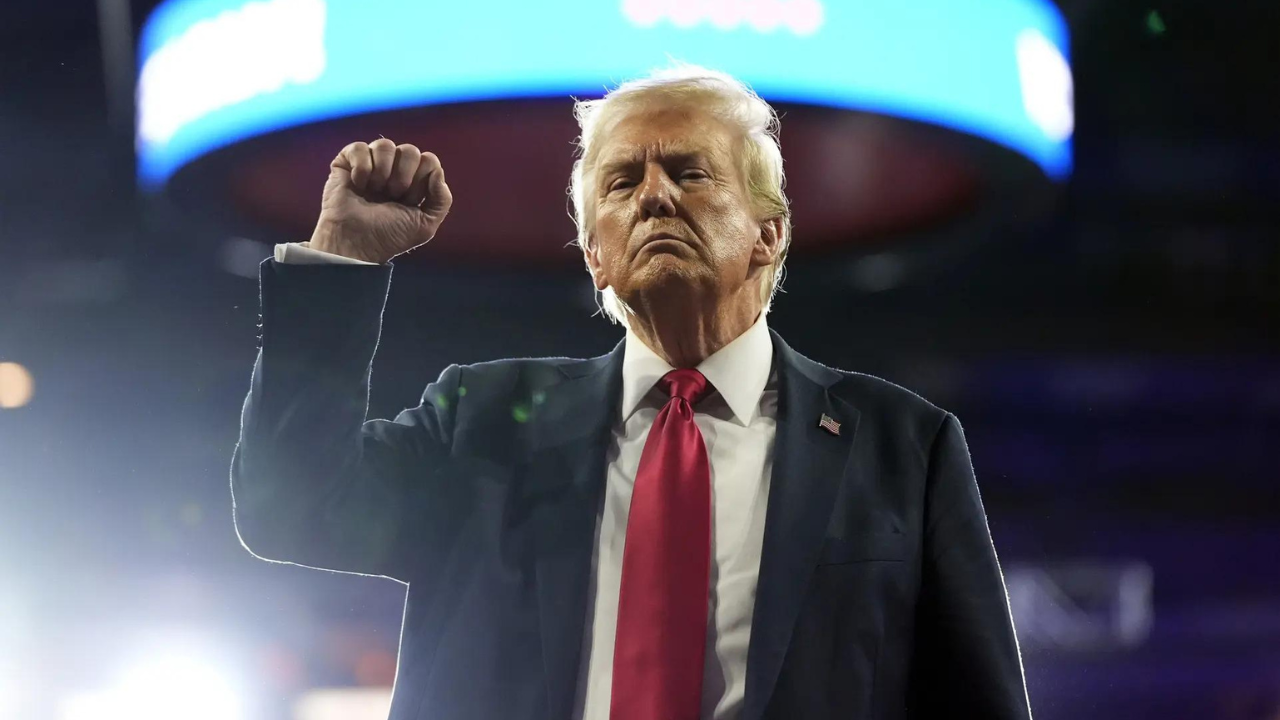
New Delhi: During his first term as US President, Donald Trump’s pet peeve was the high import tax India levied on imported motorcycles and, more specifically, on Harley-Davidson. Not that this would have made a difference to the fortunes of the iconic American bike brand which just could not get its act together in India and finally chose to shut down its plant in Haryana.
All this was happening during Trump’s last year as President when COVID-19 was on the rampage globally. He is now back in his second innings at the White House and it is a near certainty that tariffs will be the guiding force of his tenure this time around too.
Harley-Davidson has also shifted gears and is now in an alliance with Hero MotoCorp where the first jointly developed bike, X440, was launched in July last year. This may be of little consequence to Trump who could still seek a further reduction in import duties of completely built motorcycles from the prevailing 50%.
If India concedes to this demand and duties are brought down to levels of 20-25%, the new US President will have no reason to complain unless he is looking at something even lower, say in the range of 10-15%. “There is no telling what Trump will ask for because he is so unpredictable. He is a businessman first and will demand reciprocity in favourable tariffs,” said an industry official.
Balancing act
India will have little choice in the matter. From its point of view, it is important to keep the bonding strong with the US more so when the world has virtually turned topsy-turvy with two wars happening in tandem along with other issues to contend with like an aggressive China.
“India is between a rock and hard place at this point in time. West Asia is a cauldron while Russia is an useful ally especially from the viewpoint of oil and gas supplies. We have just about buried the hatchet with China but there is no telling what it has up its sleeve,” added the official.
Trump, of course, has little love lost for China and will ensure that it does not get an easy entry into the US. The previous administration had already slapped 100% levy on Chinese electric vehicles and Trump could even hike this further just to prove a point that he means business. His previous tenure saw the imposition of hefty tariffs on Chinese imports and these will only get stiffer going forward.
In the big MAGA (Make America Great Again) drive, Trump will seek direct investments from top automakers which could include the Chinese too. As an industry observer put it, “He would not have any problems if money is poured into the US for setting up new EV plants which in turn would create jobs. But there is no way he will allow imports of cars from Mexico. That would be a huge red flag.”
Chinese are welcome too
Way back in January 2017, during his first outing as President, Trump had a series of meetings with top auto executives from Toyota, Ford, Fiat Chrysler Automobiles (now part of Stellantis) and others where they assured big investments for setting up new plants. It will be no different this time too and if it means a new list comprising brands like BYD, Geely and SAIC, he will have no problems. “The message from him would be — if you want the US to give you the breaks, you had better play your part too,” said the observer.
In this backdrop, Trump will also be keen to see that Elon Musk’s interests are protected in this new EV race where the Chinese are firing on all cylinders. The CEO of Tesla Motors was a prominent face during the campaign where he sought support for Trump’s return as President. There have been reports doing the rounds that Musk could even find a place in the new administration — were that to happen, it could throw up some interesting dynamics in the global EV space.
India has been waiting to welcome Tesla but clearly Musk is no hurry at this point in time despite the formulation of an EV policy that seemed distinctly intended at wooing his company to set up shop here. Trump may well seek even more concessional levies but it is still a moot point if Tesla will be tempted to invest in the first place.
The easier option would be to import CBUs into India at reduced duty levels and this is what Trump (and Musk) will push for. The buying base for Tesla is also not going to be substantial and for a few hundred cars every quarter, there is really no point putting in big bucks for an EV ecosystem.
Ford comeback
The big American legacy brand that is scheduled for a comeback is Ford which had exited India over two years ago but is now ready to start operations at its Chennai plant all over again. The company has indicated that it will now use this facility solely as a hub for exports and it is still not clear whether it will focus solely on EVs and ship them out to Europe and ASEAN.
There was a time when Detroit was the monarch of all it surveyed till the Lehman crisis of 2008 came along and had the world in a state of paralysis. Chrysler was snapped up by Fiat while General Motors had a lifeline from its Chinese ally, SAIC. Only Ford managed to weather the storm but the glorious days of Detroit were pretty much over.
As in the case of Harley-Davidson during his first tenure as President, Trump will be chuffed about Ford seeking to make a mark in India all over again even while the plan is essentially focused on exports. Will he wrest a set of new concessions all over again for the American carmaker? How will India react to these? These questions are still up in the air any it is anybody’s guess how the tide will turn in the coming months.
Protectionism mantra
The fact that Trump has a good equation with India makes things a lot easier going forward in terms of dialogues at the political level. There is also a sense of greater predictability on his likely moves in terms of tariffs and what he perceives as a level playing field which does not harm the interests of the US. Global trade will come under greater pressure as America turns on the screws in tariffs and both China and the EU will have to cope with new challenges in this era of protectionism.
There could be other areas of concern especially when it comes to cleaner emissions and the growing focus on electrification. Will this take a backseat during the Trump regime given that this subject clearly does not meet his priority list? This still remains a puzzle and the picture will become a lot clearer during the early months of 2025.
India, in its turn, will need to strike the balance between Russia (which does not raise Trump’s hackles) and China while sending out a clear message that the US remains its closest ally. The new President will perhaps not worry too much if Chinese EVs were to make their presence in India, a remote possibility at this point in time. What he will definitely seek, however, is a greater American presence in the supply chain by way of battery components, fuel etc.
To learn more about the electric vehicle ecosystem and meet the key industry leaders, click here.
















